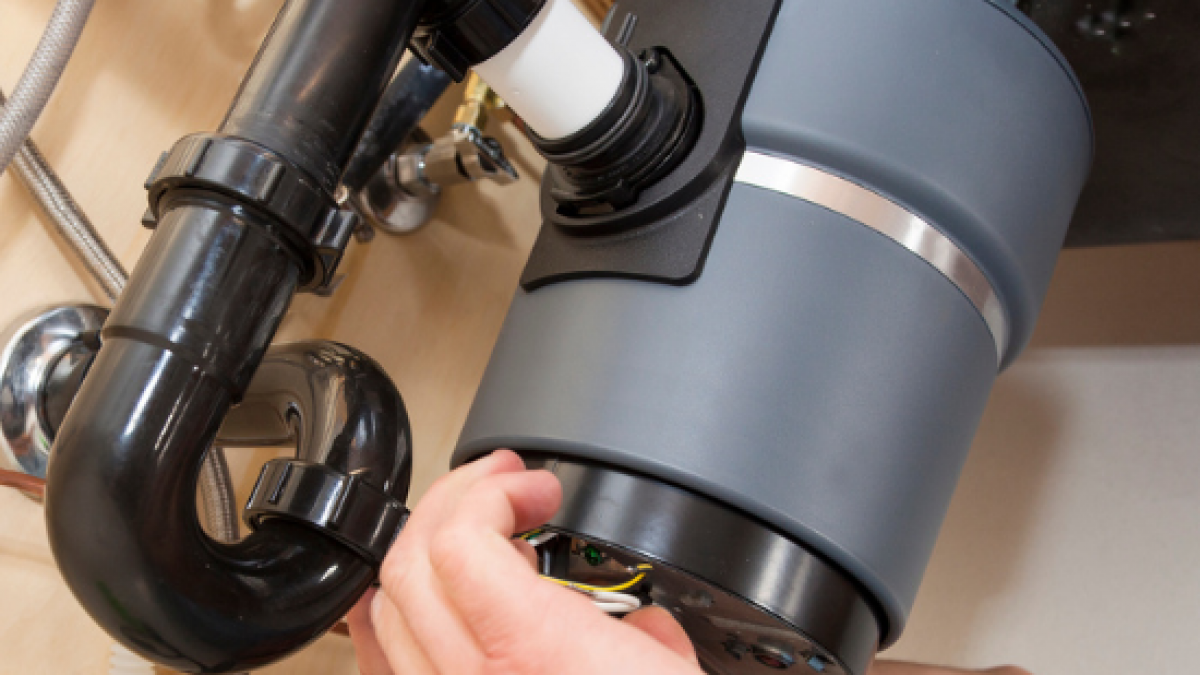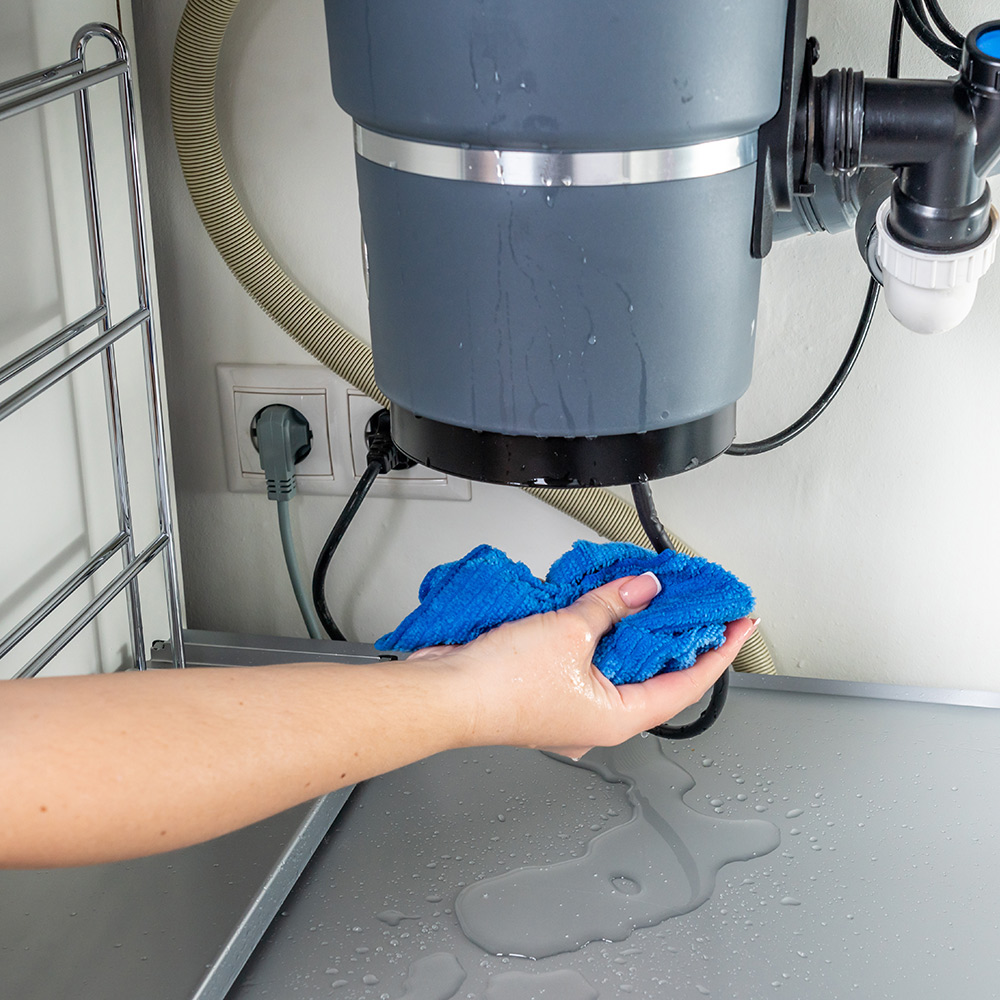Right here below you'll find additional first-rate material about Garbage Disposal Leaking From Bottom.

Garbage disposals are important kitchen area appliances that aid in getting rid of food waste efficiently. However, a leaking waste disposal unit can be a frustrating and untidy issue to take care of. The good news is, numerous leakages can be fixed easily with a couple of straightforward steps. In this article, we will talk about just how to fix a dripping waste disposal unit effectively.
Intro
Garbage disposals are mounted under cooking area sinks and are made to shred food waste into smaller sized items, allowing it to pass through the plumbing system easily. While these devices are normally dependable, leakages can happen over time because of deterioration, loose connections, or damage to the device.
Common Sources Of Leakages in Waste Disposals
Worn Seals and Gaskets
Seals and gaskets play an essential function in stopping water from dripping out of the garbage disposal. With time, these components can wear away, bring about leakages around the disposal system.
Loose Links
The connections between the garbage disposal and the plumbing system can end up being loosened in time, triggering water to leak out during operation.
Cracks or Openings in the Disposal Device
Physical damage to the garbage disposal, such as fractures or holes in the housing, can additionally result in leakages.
Recognizing the Resource of the Leak
Prior to trying to deal with a leaking garbage disposal, it is essential to identify the resource of the leakage. This can normally be done through aesthetic inspection or by performing basic examinations.
Visual Evaluation
Check the garbage disposal system very carefully for any signs of water leakage. Pay attention to locations around seals, gaskets, and link factors.
Testing for Leaks
One way to examine for leakages is by running water via the disposal device and looking for any kind of noticeable signs of leakage.
Tools and Materials Needed for Dealing With a Leaking Garbage Disposal
Prior to beginning the repair work process, collect the essential devices and products, consisting of a screwdriver, flexible wrench, plumbing's putty, substitute seals or gaskets, and epoxy or patching product for repairing splits or holes.
Step-by-Step Guide to Taking Care Of a Dripping Waste Disposal Unit
Turn Off the Power
Prior to trying any kind of fixings, guarantee that the power to the garbage disposal device is turned off to prevent the threat of electrical shock.
Find the Leak
Determine the specific location of the leakage and figure out the reason.
Tighten Links
Use a wrench to tighten up any type of loosened connections between the disposal device and the plumbing system.
Replace Seals or Gaskets
If the leak is due to worn seals or gaskets, get rid of the old parts and change them with new ones.
Patching Fractures or Holes
For fractures or holes in the disposal unit, use epoxy or an appropriate patching product to seal the damaged area.
Checking the Waste Disposal Unit After Fixing
Once the fixing is full, test the garbage disposal by running water via it to make certain that the leak has been solved.
Preventive Upkeep Tips to Stay Clear Of Future Leaks
To prevent future leakages, it is vital to carry out normal upkeep on your garbage disposal. This includes maintaining it clean, avoiding placing non-food things or hard things down the disposal, and periodically looking for leaks or various other problems.
Final thought
To conclude, repairing a dripping garbage disposal is a fairly straightforward process that can be finished with basic devices and materials. By adhering to the steps described in this article and exercising preventative upkeep, you can keep your garbage disposal in good working problem and stay clear of pricey repairs in the future.
What to Do About a Leaking Garbage Disposal
A leaking garbage disposal often goes unnoticed until you confront a sopping cabinet, a foul-smelling puddle, or an audible drip-drip-drip from the unit. The fix can be frustrating, too, because the leak can stem from a number of components in the system. Fortunately, with a little sleuthing, you can zero in on the leak and—depending on the exact location—stop the icky oozing and repair the component that caused it. Worst case scenario, if it turns out that the garbage disposal must be replaced, installing a new one is a reasonable do-it-yourself task for those with basic plumbing skills. Read on to keep the cash you’d otherwise hand over to a pro.
Prepare to find the leak
Prior to testing the garbage disposal for leaks, unplug it at the wall outlet and turn off the power from the breaker box to prevent electrical shock. Then insert a watertight sink stopper into your sink drain and wipe the unit dry with a clean cloth. In any handy container, mix a few drops of food coloring into a few cups of water, and pour the dyed water onto the sink stopper to help you locate the leak.
Investigate the source
the top, where the disposal meets the sink drain the side, where the dishwasher hose or main drain pipe connects to the disposal or the bottom of the unit Inspect each of these locations while gliding a light-colored rag over the unit; the dyed water will readily show on the rag and reveal the location of the leak. If a leak isn’t immediately apparent, remove the sink stopper and pour a few more cups of dyed water down the sink drain, then check for leaks again. Leaks near the top of the unit are more likely to show themselves while the sink is plugged, while side and bottom leaks are more noticeable while the sink is unplugged.
The metal sink flange that sits directly inside the sink drain is typically sealed around the top with plumber’s putty (a clay-like sealant) and then secured from under the sink with bolts. If the plumber’s putty deteriorates, or the bolts loosen, the flange can no longer form a watertight seal between the sink drain and the disposal—which could cause a leak at the top of the unit.
To reseal the leaky flange, you must first detach the garbage disposal. Start by loosening the screws securing the main drain pipe to the disposal, then loosen the screws in the metal clamp securing the dishwasher hose to the disposal and detach the drain pipe and dishwasher hose from the disposal. Loosen the screws in the mounting ring that connects the disposal to the metal mounting assembly beneath the sink, then pull down the disposal and carefully set it on a clean, dry surface. Loosen the bolts in the mounting assembly with a wrench, then pull down the mounting assembly and set it near the disposal.

I am very eager about The Handy Guide To Fixing Your Garbage Disposal Leaking and I am praying you enjoyed the entire entry. For those who enjoyed our page kindly do not forget to share it. Thanks a lot for your time. Come back soon.
Or Book Technician Here